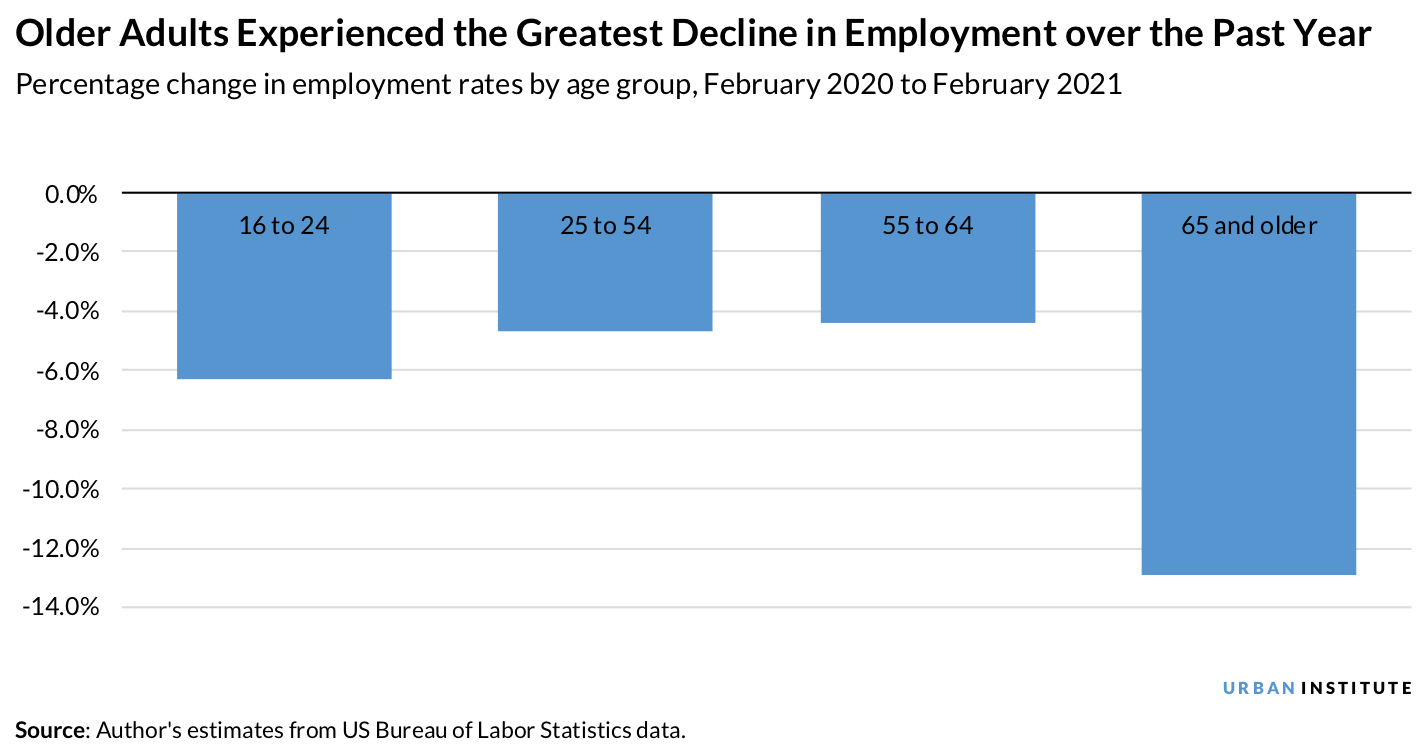
<p>(10'000 Hours / Getty Images)</p>
Much of the debate over the economic consequences of the COVID-19 pandemic emphasizes the unemployment rate, but that focus understates the pandemic’s impact on the labor market. Although millions of workers have joined the unemployment rolls since the pandemic began, millions of others abandoned the labor force when jobs became scarce, work outside the home became hazardous, and child care demands became unbearable. And the unemployment rate doesn’t count workers who exit the labor force.
Older adults constitute a disproportionate share of labor-force dropouts. Data from the Bureau of Labor Statistics show that more adults age 65 and older left the labor force in 2020 than in any year since the US began tracking such information in 1948. Many will likely never work again, jeopardizing their immediate and long-term financial security. Efforts to make the workplace safer during the pandemic, to better prepare older workers for today’s economy, and to root out ageism could help the older adults who want to work remain employed.
Many older workers left the labor force last year
Last week’s jobs report shows that the official unemployment rate has declined steadily over the past 10 months. The jobless rate in February 2021 was less than half of the rate in April 2020. Last month, however, only 61.4 percent of people age 16 and older participated in the labor force (defined as being employed, on layoff, or in search of work). Except for the early months of the pandemic, that’s the lowest monthly participation rate since March 1976, an era when less than half of women belonged to the workforce.
Labor force participation slumped most for older adults. Between February 2020 (just before the pandemic hit the US) and February 2021, the participation rate fell 11.1 percent for people age 65 and older but only 1.2 percent for those ages 55 to 64, 2.2 percent for those ages 25 to 54, and 2.9 percent for those ages 16 to 24. That’s the largest 12-month drop in the participation rate for adults age 65 and older in 60 years.
Many other older people can’t find work
The pandemic and economic fallout hit older workers twice over. In addition to the nearly 1 million workers age 65 and over who left the labor force over the past 12 months, another 165,000 older workers remained in the labor force but joined the unemployment rolls while they looked for a job or sat on furlough. In 2020, the average monthly unemployment rate for older workers soared to 7.5 percent, the highest annual rate on record. Unemployment rates for younger workers also increased last year, but not to all-time highs.
Combined, the drop in labor-force participation and the increase in unemployment reduced the share of adults age 65 and older with a job 12.9 percent from February 2020 to February 2021. Employment-to-population ratios fell barely half as much at younger ages.

Older workers may experience less financial hardship when they lose their job than younger workers because most people can begin collecting Social Security at age 62. That financial lifeline prevented many unemployed older adults from falling into poverty during the Great Recession a decade ago. But because collecting Social Security early reduces monthly benefits permanently, the decision to retire early can haunt beneficiaries if their out-of-pocket health care expenses soar when they get older. Moreover, premature retirements rob people of earnings to build their savings and often force them to begin drawing on those savings early.
Compounding the challenge for older workers, many employers are wary of hiring older people. As a result, older unemployed workers generally take twice as long as their younger counterparts to become reemployed, And those who find work typically earn only half as much they did at their previous job.
Policymakers can help
Federal policymakers can take several steps to facilitate employment at older ages.
-
Make workplaces safer. Workplaces can be especially hazardous during the pandemic for older workers, who are more likely than younger workers to develop serious health problems or die if they contract COVID-19. Workers employed in livestock-processing plants, grocery stores, health care settings, and mass transit may face the greatest risk. Vaccinating older workers as quickly as possible could enable many older adults to return to work.
Further, the Occupational Safety and Health Administration (OSHA) could do more to protect workers of all ages during the pandemic. One year into the health emergency, OSHA hasn’t issued workplace standards for COVID-19, such as regulations regarding masks, physical distancing, employer provision of personal protective equipment, and ventilation. President Biden signed an executive order last month requiring OSHA to determine whether additional standards are needed and, if so, to issue them by March 15 and strictly enforce them. - Root out ageism in the workplace. Since 1967, federal law has prohibited employees from discriminating against older workers, but age discrimination remains widespread, and a 2009 Supreme Court ruling made it more difficult for workers to prove that employers discriminate. Congress could protect older workers by reinstating the standards that existed before the 2009 court ruling. The House of Representatives passed a bill last year to do that, but the Senate has yet to act.
- Bolster supports for older job hunters. Finding work can be especially daunting for older job seekers, who might not have looked for a job for decades and whose skills may be ill suited for in-demand jobs. American Job Centers, run by the federal and state governments, help connect workers to jobs, but they aren’t geared to help older workers. Increasing funding for these centers could allow some to hire dedicated counselors for older workers and provide more training, which may be especially important as the pandemic accelerates ongoing occupational shifts. Such initiatives could help older people find jobs when they’re ready to return to work.
Let’s build a future where everyone, everywhere has the opportunity and power to thrive
Urban is more determined than ever to partner with changemakers to unlock opportunities that give people across the country a fair shot at reaching their fullest potential. Invest in Urban to power this type of work.